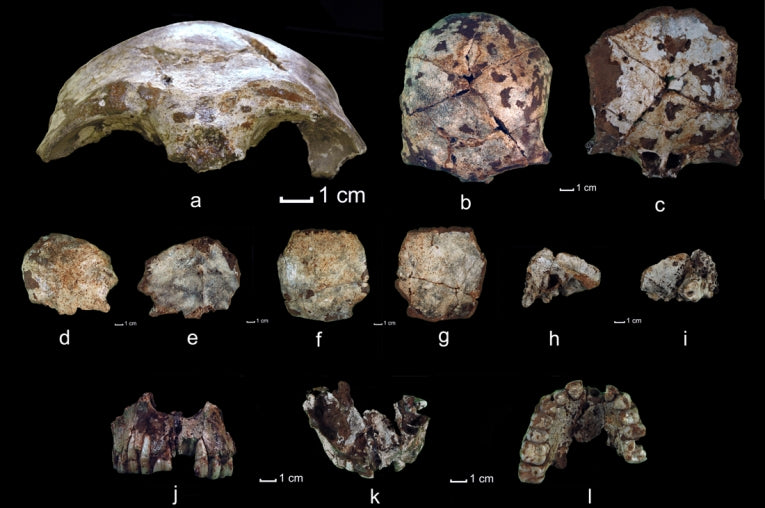Chris Stringer of the Natural History Museum in London confirms that "out of Africa", 50,000 years ago, humans colonised far and wide. An ancient Asian skull of modern Homo sapiens clinches this, and confirms that claims for humans as far away as Australia and New Guinea a few thousand years later are true.
In the Middle east, bones exist from 80,000 to 100,000 years ago, leaving a sort of pathway from which we can guide ourselves along in their ancient footsteps. What amazes scientists is that this long-forested area is far away from the standard supposed route following coasts around Arabia and India.
This recent skull from a cave in Tam Pa Ling, in the Annamite Mountains of northern Laos, has heavily worn teeth and is only partly preserved, but predates all other south-east Asian H. sapiens by at least 20,000 years.
The upper brain case shows the high human forehead and our classic small brow-ridge. A jawbone and the worn teeth show the typical small incisors. What is not typical of ancient western humans is the temporal and occipital bones and its teeth.
A whole new era of human race discussion could follow this paper! However the importance at the moment lies in the great age (between 46 and 63 million years ago) of this discovery and how it is becoming easier now to trace the human condition as it adapted to different conditions and continents.

Credit: © F. Demeter
Above: The pieces of skull of an early modern Homo sapiens, found in the Tam Pa Ling cave in Laos. Dating suggests it is between 46,000 and 63,000 years old, making it the oldest skeletal remains of modern man found in Asia
Genetics has told us that 60,000 years ago was a time for colonisation in distant parts of Asia, but this is the first time any evidence on the ground has been found. Dr. Laura Shackelford of the University of Illinois at Urbana-Champaign, led the study with many colleagues Laos Australia and France.
"It's a particularly old modern human fossil and it's also a particularly old modern human for that region," as Laura says. The fossil is very small compared to ourselves, but otherwise almost identical.
The classic archaeological question gets the answer, "It is is very hard to say much of anything about the food that they ate because the teeth are very worn down. This is a relatively young adult individual so the diet most likely included tough foods to have worn the teeth to such a great degree." Pity, that! They published their paper, Anatomically modern human in Southeast Asia (Laos) by 46 ka, in the Proceedings of the National Academy of Sciences.










